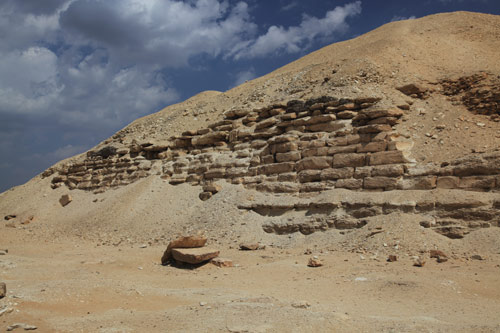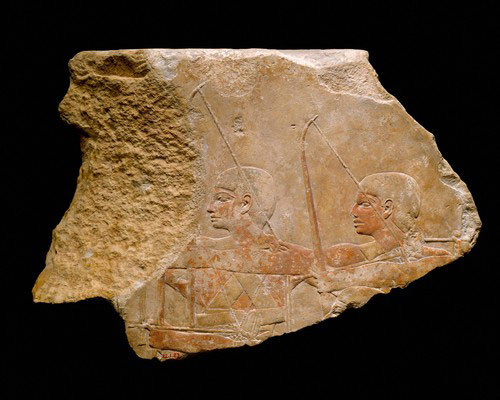 Traveling Exhibitions
Traveling Exhibitions Traveling Works of Art
Traveling Works of Art Conservation Projects
Conservation Projects Excavations
Excavations Fellows
Fellows Exchanges & Collaborations
Exchanges & Collaborations Multiple Items
Multiple Items
The Met Around the World presents the Met’s work via the global scope of its collection and as it extends across the nation and the world through a variety of domestic and international initiatives and programs, including exhibitions, excavations, fellowships, professional exchanges, conservation projects, and traveling works of art.
The Met Around the World is designed and maintained by the Office of the Director.
Traveling
Exhibitions
The Met organizes large and small exhibitions that travel beyond the Museum's walls, extending our scholarship to institutions across the world. See our national and international traveling exhibition program from 2009 to the present.
Traveling
Works of Art
The Met lends works of art to exhibitions and institutions worldwide to expose its collection to the broadest possible audience. See our current national and international loans program.
Conservation
Projects
The preservation of works of art is a fundamental part of the Met's mission. Our work in this area includes treating works of art from other collections. See our national and international conservation activities from 2009 to the present.
Excavations
The Met has conducted excavations for over 100 years in direct partnership with source countries at some of the most important archaeological sites in the world. Today we continue this tradition in order to gain greater understanding of our ancient collections. See our national and international excavation program from the Met's founding to the present.
Fellows
The Met hosts students, scholars, and museum professionals so that they can learn from our staff and pursue independent research in the context of the Met's exceptional resources and facilities. See the activities of our current national and international fellows.
Exchanges & Collaborations
The Met's work takes many forms, from participation in exchange programs at partnering institutions and worldwide symposia to advising on a range of museum issues. These activities contribute to our commitment to advancing the work of the larger, global community of art museums. See our national and international exchange program and other collaborations from 2009 to the present.
 The pyramid of Amenemhat I.
The pyramid of Amenemhat I.
Relief of King Amenemhat I
Middle Kingdom, Dynasty 12, reign of Amenemhat I–Senwosret I, ca. 1991–1952 B.C.
Egypt, Memphite Region, Lisht North, Pyramid Temple of Amenemhat I, MMA 1907
Rogers Fund, 1908 (08.200.5)


Group of Archers
Old Kingdom, Dynasty 4, reign of Khufu or Khafre, ca. 2551–2494 B.C.
Egypt, Memphite Region, Lisht North, Pyramid Temple of Amenemhat I, Core of pyramid, west side, MMA 1920-1922
Rogers Fund and Edward S. Harkness Gift, 1922 (22.1.23)

 East side of the pyramid of Amenemhat I, with offering table now in the Metropolitan Museum.
East side of the pyramid of Amenemhat I, with offering table now in the Metropolitan Museum. North side of the pyramid of Amenemhat I, with false door now in the Egyptian Museum, Cairo.
North side of the pyramid of Amenemhat I, with false door now in the Egyptian Museum, Cairo.
Egypt
1906–1922, 1991
Two settlements arose in the area: an earlier one around the pyramid built during the Middle Kingdom and a Ramesside town built on the ruins of the pyramid itself. The area seems to have been inhabited well into the New Kingdom. Study of the area has yielded valuable information about houses and workshops during these periods.
Background
The pharaoh Amenemhat I (ca. 1981–1952 B.C.) was the first ruler of Dynasty 12, a key era of ancient Egypt's Middle Kingdom. One of Amenemhat I's achievements was the establishment of a new capital city at Itj-tawy ("Seizer of the Two Lands"), which was located in the vicinity of the modern village of Lisht, about 25 miles south of Cairo. Amenemhat I constructed his pyramid in the area of his capital city. During the preceding Dynasty 11, political power was centered far to the south in the area of Thebes (modern Luxor).
The centerpiece of the complex was the king's limestone pyramid. A sloping passage and shaft on its north side led to the burial chamber; a shaft in the floor of the chamber ends in groundwater. A small chapel was built against the entrance to the burial chambers on the north side of the pyramid. A temple was constructed on the east side of the pyramid. On the west side were ten shafts believed to have been used to inter women of the royal family; all were robbed in ancient times. High-ranking individuals of Amenemhat I's court were also buried around the pyramid complex. These tombs are an important source for understanding the development of Middle Kingdom burial practices. Of particular interest are the objects and jewelry found in the intact burial of the lady Senebtisi.
During Amenemhat I's reign, pyramid building was revived after an approximately 150-year hiatus. At least part of the complex was constructed with the blocks from disassembled Old Kingdom royal monuments, including structures built by the pharaohs Khufu, Khafre, Userkaf, Unis, and one of the kings named Pepi. The builders probably used this material in order to speed construction of the complex. Amenemhat I's builders also appear to have reused blocks from an earlier structure built by Amenemhat I himself.
Made possible by The Adelaide and Milton de Groot Fund, in memory of the de Groot and Hawley Families.

